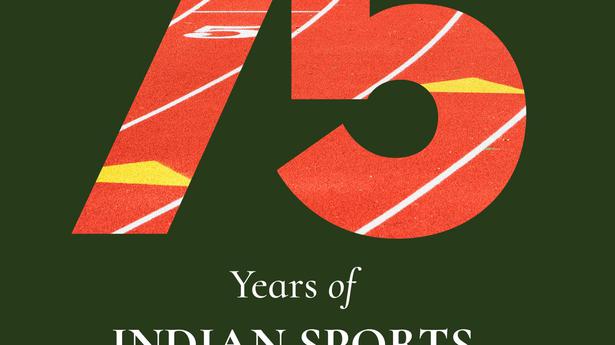
Review of Chandresh Narayanan’s 75 Years of Indian Sports — Game, Guts, Glory: As the millennium turned, so did India’s sporting fortunes
The Hindu
A walk through India’s sports since Independence is timely, but falls short of explaining how standards were raised so dramatically
When I began as a sportswriter in the 1980s, there was a touch of the forlorn in sports headlines. Will this be Vijay Amritraj’s year at Wimbledon? (it wasn’t). Will India finally win another individual medal at the Olympics? (they didn’t). Can India win the world championship? (they couldn’t). Wrestler K.D. Jadhav, who won a bronze at the 1952 Games was resurrected every four years just before the Olympics, and forgotten in the years in between.
The present being cheerless, we wallowed in the past. So we didn’t win a medal at the Olympics, we told ourselves, but Milkha Singh did break an Olympic record and finished fourth at Rome in 1960. Soon P.T. Usha added her name to the list of the nearly people on our sporting canvas. And there was always hockey. Olympic gold from 1928, with some hiccups along the way. Then for years, nothing.
But as the millennium began to turn, so too did India’s fortunes. First Leander Paes and then four years later Karnam Malleshwari won Olympic bronzes to bring India to the edge of the possible. Soon shooting, wrestling, boxing, badminton, weightlifting gave us medals before Abhinav Bindra and Neeraj Chopra did what was unimaginable in the last century by claiming gold in shooting and athletics respectively.
At the Commonwealth Games in Birmingham recently, India showed they were running, throwing, jumping, flicking, spinning, thumping, grabbing their way to a place among the leading sporting nations.
Chandresh Narayanan’s book, 75 Years of Indian Sports: Game, Guts, Glory, a journalistic recitation of India’s sports since Independence, is timely, detailing the ‘what’ but falling short of the ‘why’ and ‘how’. How did a nation not renowned for its sports internationally (with some exceptions) raise its standards so dramatically? Why was it only cricket, cricket and more cricket for so many years, regardless of wins or losses? At what point did Indians decide to move beyond the Olympic ideal of mere participation and begin to focus on winning?
The value of the book lies in its range of topics for historians of sport and Indian society to delve deeper into. The story of Indian chess, for example, is the story of one man, Viswanathan Anand crossing a line and being followed by dozens of others. A social history of Indian badminton, a sport played across building societies, is waiting to be written.
Perhaps it is because this is a book to commemorate the 75th anniversary of India’s Independence that this sentence appears: “Commerce never drove Indians as they aimed to be amongst the best in the world.” Patriotism, nationalism, sporting victories and ideal behaviour of sportsmen have been a strange mixture in Indian sport.













